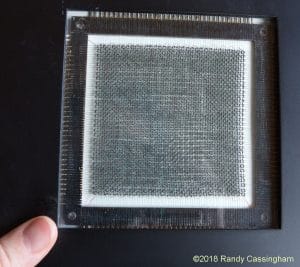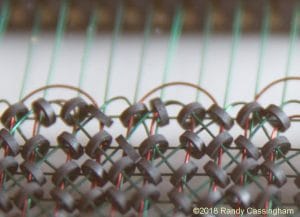After earning his Master’s degree in electrical engineering from MIT in 1943, Everett joined the staff of the university’s Servomechanisms Laboratory, where he worked with fellow grad student Jay Forrester. In 1944 they got a contract from the U.S. Navy. The job: develop a “universal” flight trainer and aircraft simulator. That wasn’t easy at the time, since computers of that era were analog — and mostly mechanical — and were much too slow for the task at hand. Everett and Forrester realized a big jump was needed, and developed one of the first digital computers, Whirlwind. It was one of the first computers to calculate in “bit-parallel” using 16 math processors, making it 16 times faster than analog computers, which processed data serially with just one math processor. Rather than feeding in data as part of the program (batch mode), they went with a stored program design, with the data needed to be crunched coming continuously, in real time. They completed the design in 1947, and construction began in 1948, using 5,000 vacuum tubes. The design called for 2048 16-bit words of memory, but there was no technology for that much memory that operated quickly enough. Forrester realized that magnetic material might work, and invented core memory for Whirlwind, a leap in technology that led directly to the digital computers we have today.

By then, of course, World War II was over, but the Cold War was in full swing, and the new design — and the follow-on, Whirlwind II — was useful enough that it became the basis for a new computer, the Semi-Automatic Ground Environment, or “SAGE”, an air defense system operated by the North American Aerospace Defense Command (better known as NORAD). The Whirlwind design also led directly to the computers still used today to control air traffic — and, of course, influenced the design of all digital computers that followed.

Another MIT grad student, Ken Olsen, led a project to convert the Whirlwind design to use transistors, rather than vacuum tubes — the successful TX-0 (Transistorized Experimental computer zero). When Olsen tried to make an even larger follow-on, it got so complex he gave up and instead co-founded Digital Equipment Corp., creators of the famous “PDP” line of minicomputers, based on what he learned in Everett’s lab. Olsen and Everett saved the Whirlwind computer, which became the basis for the Boston Computer Museum in 1979. (Whirlwind I is now in the collection of the Computer History Museum in Mountain View, Calif.) In 1958, Everett went on to help found MITRE, a non-profit designed to help implement SAGE; it now operates several federally funded research and development centers. He served as its technical director, then vice president, executive vice president, and then president (from 1969 to 1986), where he was well known for his management philosophy: “Good people make a great organization, which gets good jobs, which attract good people.” Everett was awarded the Medal for Distinguished Public Service from the Department of Defense, and in 1989 he and Forrester were awarded the National Medal of Technology. In 2009, Everett was made a Fellow of the Computer History Museum for his work on Whirlwind and SAGE, “and a lifetime of directing advanced research and development projects.” He died on August 15, at 97.
Wikipedia, on Core Memory: Magnetic-core memory was the predominant form of random-access computer memory for 20 years between about 1955 and 1975. Such memory is often just called core memory, or, informally, core.

Core uses tiny magnetic toroids (rings), the cores, through which wires are threaded to write and read information. Each core represents one bit of information. The cores can be magnetized in two different ways (clockwise or counterclockwise) and the bit stored in a core is zero or one depending on that core’s magnetization direction. The wires are arranged to allow for an individual core to be set to either a one or a zero and for its magnetization to be changed by sending appropriate electric current pulses through selected wires. The process of reading the core causes the core to be reset to a zero, thus erasing it. This is called destructive readout. When not being read or written, the cores maintain the last value they had, even when power is turned off. This makes them nonvolatile.
Using smaller cores and wires, the memory density of core slowly increased, and by the late 1960s a density of about 32 kilobits per cubic foot was typical. However, reaching this density required extremely careful manufacture, almost always carried out by hand in spite of repeated major efforts to automate the process. The cost declined over this period from about $1 per bit to about 1 cent per bit. The introduction of the first semiconductor memory SRAM chips in the late 1960s began to erode the core market. The first successful DRAM, the Intel 1103 which arrived in quantity in 1972 at 1 cent per bit, marked the beginning of the end of core. Improvements in semiconductor manufacturing led to rapid increases in storage and decreases in price that drove core from the market by around 1974.
Although core memory is obsolete, any computer memory is still occasionally called “core”; in particular, a file recording the contents of memory after a system error is usually called a core dump.
(Source)
